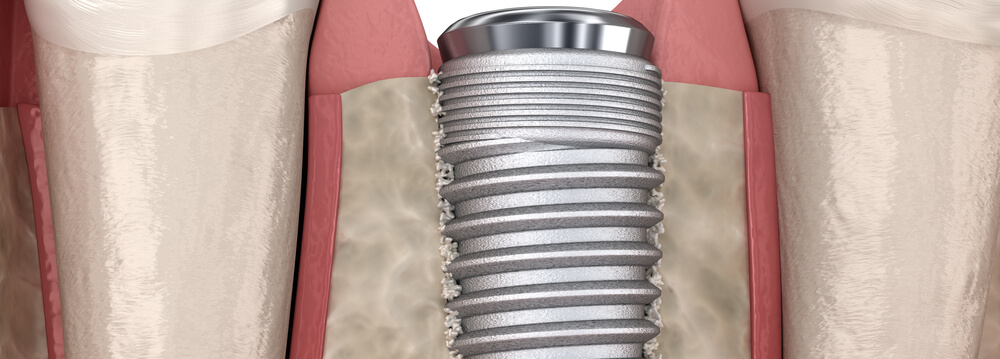
The Remarkable Journey of Osseointegration: Unveiling Dental Implants’ Vital Connection
Table of Contents
Introduction: Bridging Bone and Implant
Dental implants have revolutionized the field of dentistry, offering a robust solution to tooth loss that replicates the natural functionality and appearance of teeth. Central to the success of dental implants is a process called osseointegration, a remarkable biological phenomenon that forms the foundation for the implant’s stability and longevity.
1. What is Osseointegration?
1.1 Definition and Process
Osseointegration is the pivotal bond that forms between the implant’s surface and the surrounding bone tissue. This biological fusion ensures the implant becomes a seamless part of the jawbone, mimicking the root of a natural tooth. This structural union not only anchors the implant securely but also enables it to withstand the daily stresses of biting, chewing, and speaking.
2. The Healing Phase: A Key Time Gap
After the initial surgical placement of the implant, a healing phase is crucial to allow osseointegration to occur. This period is when the implant establishes a strong connection with the bone tissue. This healing phase typically lasts two to six months, although it can vary depending on individual circumstances.
3. Factors Influencing Healing Time
Several factors contribute to determining the duration of the healing phase:
3.1 Bone Quality and Density
Patients with healthier bone quality and density often experience a faster osseointegration process. Adequate bone support provides a solid foundation for the implant to integrate swiftly.
3.2 Patient’s Overall Health
General health plays a pivotal role in the healing process. Conditions that affect blood flow, immune response, and healing capacity can impact the duration of osseointegration.
3.3 Implant Location
The location of the implant within the mouth can influence healing time. Implants in areas with high chewing forces might require a longer healing period for optimal integration.
3.4 Bone Grafting and Augmentation
In cases where the jawbone lacks sufficient volume, bone grafting or augmentation procedures might be required. This additional step can extend the healing time as the newly introduced bone material integrates with the existing bone.
4. The Role of Skilled Dental Implantologists
The expertise of the dental implantologist is paramount during the osseointegration process. Skilful control over drilling speed, precise operation protocols, and tailored approaches for each patient’s unique situation are pivotal for a successful outcome. These measures ensure that the implant is placed optimally, promoting efficient osseointegration.
5. The End Goal: Lasting Stability
The waiting period for osseointegration might seem like a patient’s patience being put to the test, but it’s a crucial phase that sets the stage for the implant’s long-term stability. By allowing this vital connection to flourish, patients can look forward to enjoying the benefits of a secure, functional, and natural-looking dental implant.
Conclusion: Unveiling the Power of Integration
Osseointegration is the unsung hero behind the success of dental implants. It’s the process that forges a profound connection between bone and implant, ensuring a solid and lasting foundation. At Smile Health, our commitment to this remarkable journey guarantees that your dental implants achieve optimal integration, providing you with a restored smile that stands the test of time.
Are you ready to embark on the transformative journey of dental implants and experience the power of osseointegration? Connect with us today to discover how we can guide you towards a confident and radiant smile.
Ready to reclaim your confident smile?
Contact us today through our website's contact form for a personalised consultation and discover why dental implants are the clear winner in tooth replacement!
